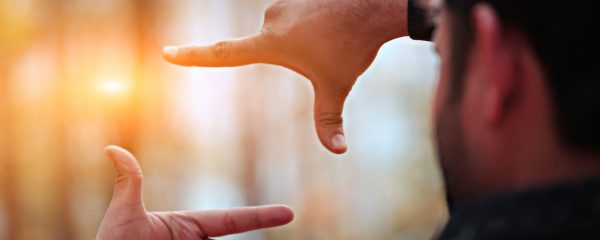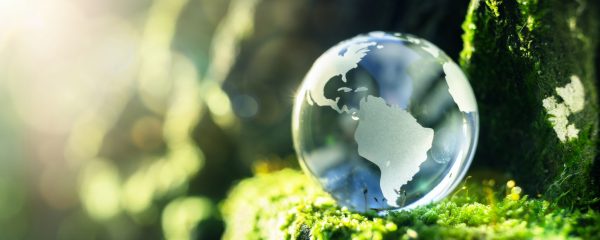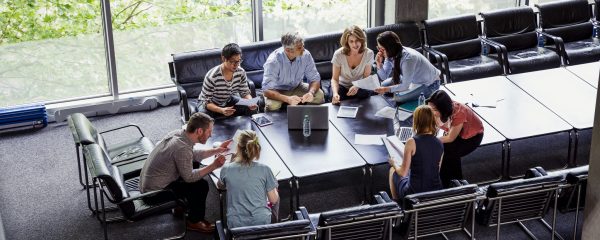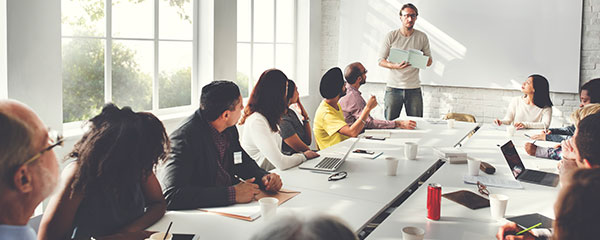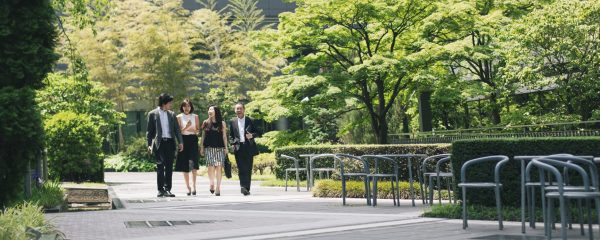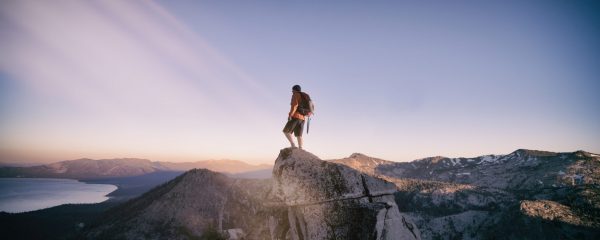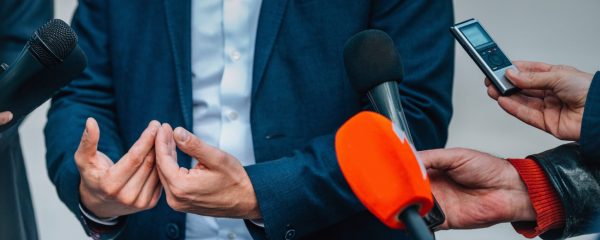Lifelong learning opportunities shouldn’t feel forced – instead, they should feel like a natural extension of the programme. Tim Banerjee Dhoul talks to the Director of the Anáhuac MBA, Guillermo Zamacona, and programme alumna, Pilar Brogeras, about where the responsibility lies for graduates’ continuing education
‘Doing what I do, you know that people need development – all the time. You need to be on your toes for whatever’s coming,’ says Pilar Brogeras, a Managing Director at executive search firm, Stanton Chase, and an MBA alumna of Universidad Anáhuac México in Mexico City.
‘What I see is that when you’re working, you’re in this one lane and it’s pretty easy to lose sight,’ she continues. ‘Sometimes, you’re just running and running like a hamster on a wheel. I think that is where these [lifelong learning] programmes can slap you on the face and be like, “hey, you have to keep it up, you have to keep pushing and gain a little bit of perspective,” because organisations do not always give you the opportunity or the tools to realise where you have to develop.’
‘For me, it’s more of an internal motivation – it starts with you, but I do think that universities have to do this work of putting in place programmes that really respond to the needs of companies and professionals. They have a responsibility to put in place a platform that can allow you to reach whatever it is that you want to reach through those programmes because they have a very strong network of players and strategic alliances.’
‘A responsibility from both sides’
Guillermo Zamacona, Director of the Anáhuac MBA, agrees that Business Schools have a responsibility for their graduates’ continuing education: ‘It’s a responsibility from both sides. I think it’s our responsibility as a Business School to be creative enough and to have the right strategy to make it feel natural so that the alumni and the students get involved.
In this sense, much of the work revolves around not only creating the right opportunities, but also facilitating the engagement of alumni. ‘We’ve developed a lot of channels, from academic and social events, to challenges and WhatsApp groups – a really big agenda, both within the MBA programme and in terms of lifelong learning,’ Zamacona explains. ‘We have tried to develop it in a way where it doesn’t feel like they are doing something extra where they have put it in their diary and it’s like, “ugh, today I have to go to this”. We’ve been trying to do it more naturally so that the networks get more efficient and the alumni get more valuable courses and activities.’
Network ‘efficiency’ comes when alumni interact and work with each other automatically in the years after their graduation, as if it were a natural extension of the programme. In the process, they can also continue learning from each other.
‘It’s great to see that our channels are generating this,’ says Zamacona, giving a recent example of spotting – casually, on social media – two alumni collaborating outside the School’s official channels. ‘I saw their picture and it was great to see that they were working together on a new artistic project, especially because it was nothing that we have done directly… I wish I could charge a fee for every business that is created among our alumni and our network.’
Gaining traction
A self-confessed bookworm with a background in communications, Brogeras says she enrolled in the Anáhuac MBA because she wanted to broaden her skills and knowledge through a programme that balanced hard and soft skills. ‘For me, it was very important to have the overall picture of how an organisation works…what I do is place talent – maybe I’m not the specialist in a role but I understand the main challenges.’
She then took full advantage of international opportunities that arose because of her MBA, attending short programmes at Harvard Business School and EADA Business School in Spain in the year she graduated. More recently, she secured a scholarship for a highly selective executive education programme aimed at preparing female leaders for board roles. Run by Banco Santander and known as the Santander W50, Brogeras attended the programme at UCLA Anderson School of Management, having received notification of the opportunity from her alma mater. ‘These [opportunities] were not necessarily from Anáhuac, but they were a result of the educational offer of Anáhuac,’ she says.
Lifelong learning opportunities offered directly by her School have progressed rapidly in recent years, in Brogeras’s opinion. ‘To be super blunt, when I was there, I think there was not a lot of interest post-graduation. It was more ‘thank you’ and ‘bye’,’ she confides. ‘So, I think it has taken a while to get some traction, but all the work [Zamacona] and the team has done has started getting the attention of many of the alumni.’
‘We offer all of our students the chance to join the alumni association when they graduate and all of them say “yes”,’ says Zamacona, referencing cohorts from the last six or seven years in particular when asked about the current take-up for the School’s lifelong learning opportunities. ‘They sign and become part of the association. But [in terms of] really being involved, we have around 1,000 alumni… I would say that [engagement] is gradual. The three years after graduation around 75% are involved with all of these activities; the next three years, 50%; the next three years, 25%.
Brogeras, who sits on the alumni association board, concedes that her fellow MBA alumni can be ‘tough cookies’, saying: ‘For someone that graduated maybe 10-15 years ago, there was nothing, and now there’s this bunch of activities. But they probably still feel a little disconnected from the programme as it’s been such a long time. I think it’s sort of like carving stone and being there and being there and eventually they will come back.’
Cocreated activities
Nominated for an AMBA Excellence Award this year (with the winner yet to be announced at the time of going to press), the lifelong learning programme at Anáhuac’s Faculty of Economics and Business is designed to cover a full range of activities – social, academic, spiritual, cultural, communitarian, and physical – deemed necessary for ongoing career success. These opportunities, Zamacona advises, are all cocreated with its stakeholders: ‘For example, we have quarterly seminars and, this quarter, we had a three-day seminar, after which we launched a survey. In that survey, we asked what alumni want to know in the next quarter. With those answers and some other inputs, from the alumni association or from the professors or students, we create the next agenda.’
When asked how the peer-to-peer learning that is so integral to MBA programmes can be replicated at alumni events, both Zamacona and Brogeras talk about the importance of an event’s format and setting.
‘It’s not like we invite all our alumni to a lecture on finance, or with the CFO of Miniso,’ Zamacona says, referencing a recent example of an event featuring an alumni and c-suite manager with the Chinese retail multinational offering insights into doing business with Asia. ‘It’s a one-hour talk, then 30 minutes of Q&A and then an hour and a half of networking with him and all of the other participants. It’s a balance between academic and social.’
‘The right people with which to connect’
Brogeras agrees on the importance of activities’ social aspect, saying that she values, for example, the opportunity to sit down and have a coffee and a chat with other participants before going to see such talks. She’s also big on the value of that traditional benefit of joining a leading Business School’s MBA programme – the network you gain access to as a result.
The network – or rather, ‘putting in place the right people with which to connect,’ has, for Brogeras, been a clear highlight of what’s been on offer from Anáhuac since her graduation from the programme in 2014. ‘Through your network there is so much to leverage, in terms of perspective, mentoring, or just information you want to understand more about, relating to the sector you’re working in,’ she reasons.
Seven years on from her MBA programme, Brogeras says she’s in touch with fellow Anáhuac MBA alumni a couple of times a month. ‘I have one who was from the MBA, but from a couple of generations [cohorts] before me. We were together in the W50 programme – we’re very close and we even started doing some business together. Another friend is in Deloitte and has done a lot of stuff, so I reach out to him every now and then,’ she says by way of example, before adding that she remains in touch with people from the Harvard and EADA programmes she attended at the time of her MBA.
A couple of times a month is also the average frequency with which the School facilitates a point of interaction for alumni, a get together, or other lifelong learning opportunity, according to Zamacona.
Such regularity seems particularly apt at a time of uncertainty for global business and society. The Covid-19 pandemic, for Brogeras, has certainly upped the need for MBAs to look at ways of upskilling and reskilling: ‘Now it’s hit us that we have to change the way we work and the way we
do business. Business models have changed considerably, so it’s very important for us to remain aware of where we might need to develop ourselves if we want to keep our jobs.’
This article originally appeared in Ambition – the magazine of the Association of MBAs (AMBA).

